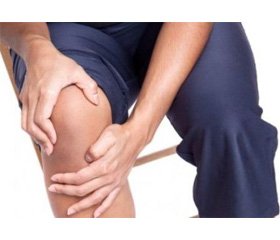Журнал «Боль. Суставы. Позвоночник» 2 (18) 2015
Вернуться к номеру
Some Problems оf Early Diagnostics оf Diabetic Arthropathy
Авторы: Gnidenko J., Bobro V. - Kharkiv National Medical University, Kharkiv, Ukraine
Рубрики: Ревматология, Травматология и ортопедия
Разделы: Медицинские форумы
Версия для печати
Статья опубликована на с. 88
Introduction. With such complication of diabetes mellitus (DM), as diabetic osteoartropathy (DОА or Charcot foot), there are doctors of different specialties, but far not always it in time is recognized. Prevalence of this complication among patients on (DM) folds less than 1 %, although in literature there are data about the defeat of bone fabric feet in 0.1–55 % of patients. Such large divergence of data, probably, related to the differences in methodology of inspection and different criteria of diagnostics of DОА. Consider now, that DОА causes any not form of neuropathy, its «subspecieses» are but only certain. In this connection to foresee development of DОА difficult, and late diagnostics and inadequate treatment of patient result in invalidisation.
Aim of work: to investigate frequency and character of clinico–instrumental signs of defeat of bones’ tissue for patients on DFS.
Materials and methods. The analysis of results of inspection is conducted 62 patients on DM 2 to the type, complicated SFS. Men it was 36 (58.1 %), women 26 (41.9 %). Middle age of patients presented 56.90 ± 1.02. Experience of DM laid down 12.90 ± 1.02. A questionnaire was used by means of minute test of estimation of risk of osteoporosis, method of ultrasonic densitometry and radiography.
Results and their discussions. Distribution of the investigated patients depending on the clinico–pathogenetic form of DFS was such: 14 patients (22.6 %) had neuropa–thic form, 18 (29.0 %) — ischemic and 30 patients (48.4 %) — mixed. From data of anamnesis, from 62 patients on DM the diagnosis of DОА was first set to 47 (75.8 %) patients, from them 92.2 % — at presence of ІІІ–ІV of the stage of DОА. A questionnaire by means of minute test and analysis of anthropometric data of patients allowed to distinguish patients (35 persons — 56.4 %) with the high risk of presence of osteoporosis. From data of anamnesis, 34 (54.8 %) patients had an episode of manifestation of DОА as an one–sided sharp edema of foot. Mostly (in 37.5 % cases) patients saw a doctor of general practice or surgeon of policlinic, but manifestation of the sharp stage of Charcot foot was not diagnosed. At radiography research of bones’ of foot of sign of osteoporosis educed in 9 (14.5 %) patients from the number of inspected (mainly with the neuropathy form of DFS); in 27 (43.5 %) patients from all cases the educed phenomena of ossifluence, presence of bone sequestra, osteomyelitis (mainly at the ischemic and mixed forms of DFS). Conducted inspection of patients with the high risk of osteoporosis educed the presence of osteopenia the method of ultrasonic densitometry in 30 patients (48.3 %), from them in 12 (19.3 %) is an osteoporosis, that folded 34.3 % from the group of high risk.
Conclusions. The presence of sharp phase of DОА is necessary to be assumed for all patients with the one–sided edema of foot, taking into account duration of motion of DM, expressed of diabetic neuropathy, trauma or surgical interference on a foot, that preceded to the edema. A radiography inspection of patients is the late method of diagnostics of defeat of bone fabric, that does not allow effectively to conduct the prophylaxis of osteopenia and timely treatment of osteoporosis. For stratification of risk of osteopenia for patients from DFS it is necessary to use a minute test with verification of degree of defeats of bone fabric by means of densitometry. Patients with suspicion on DОА most rationally to send in the specialized podiatric separations (centers).

